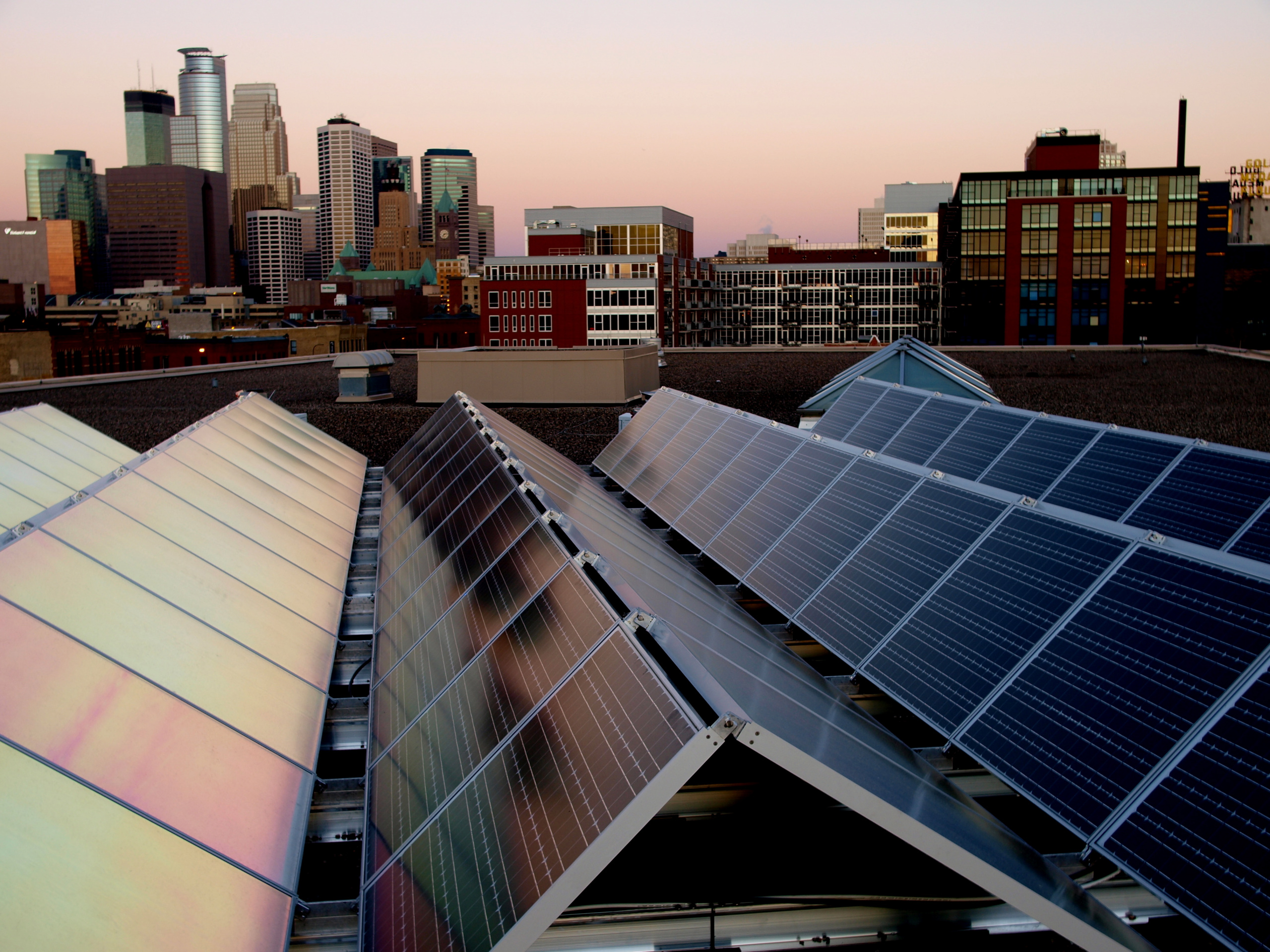In 2019, renewables are ready for primetime
Technology is no longer the limiting factor.

Solar panels soak up the sunshine in Minneapolis, where this year’s ASES Solar 2019 conference was held. Photo courtesy of Minnesota Solar Challenge via Flickr, CC BY-NC 2.0.
I spent the last week in Minneapolis, mingling with solar energy experts and advocates at the annual American Solar Energy Society conference. In the very first session of the week, conference chairman John Dunlop pointed out how strikingly different this year’s gathering, themed “Race to Renewables,” would be than in years past.
Before I board a plane and head back home, I can’t help but share that this week has left me more hopeful than ever about the future of renewable energy.
For starters, you should understand that the American Solar Energy Society, or ASES for short, is just as specialized and technical a group of people and organizations as the name suggests. For decades, the society’s annual conferences have focused on research and innovations in clean energy technology. At each previous annual meeting, there have been dozens of posters and presentations centered around a goal of refining and improving the technologies that allow us to capture, utilize and even store clean renewable energy from the sun.
This year, Dunlop decided on an entirely new approach, starting with the premise that the technology isn’t actually the problem. This year’s central question was: How can we adopt clean energy technologies at a sufficient pace to reach 100 percent renewable energy before the climate clock runs out?
For ASES, a shift in focus from technological improvement to urgent adoption and political action seems like a big deal. Part of the reason for it is the increasing urgency and magnitude of the challenge presented by global warming.
Keynote speakers including Dr. Jonathan Foley, Executive Director of Project Drawdown, reminded us that the recent Fourth National Climate Assessment and IPCC Special Report of Global Warming of 1.50 C paint a sobering portrait of the climate risks we face and called for a rapid shift away from fossil fuels. These aren’t just future risks, either — we’ve seen communities across the country reckon with record-breaking droughts and floods, extreme heat and violent storms.
For an organization like ASES, which has spent upwards of half a century recognizing the benefits of solar energy and advocating for increased adoption, current efforts to stall or even reverse climate progress at the federal level are frustrating, to say the least. And in my work to help cities and states across the country make solar energy more accessible to their citizens and businesses, I see exasperated public servants and community leaders take matters into their own hands to advance clean energy every day.
When our national leaders fail to address a problem as critical and pressing as climate change, it seems to spur action at every other level — from state and local government to industry associations and nonprofits. ASES is no exception.
Finally, a wave of ambitious renewable energy policies in U.S. cities and states provides convincing evidence that renewables are ready. States from California and New Mexico to Washington and Maine have made plans for a future powered by 100 percent clean renewable energy. Cities are doing the same in droves.
State and local governments are making these commitments because they believe in them — not only do they recognize that the climate crisis demands solutions that match its scale, but they trust that the renewable technologies of today can enable a transition to the energy system of tomorrow.
I, for one, am all for a solar energy conference that focuses on aiming high. While science and development will continue to play a key role in shaping what’s possible, the social and political momentum behind renewable energy adoption is what has me feeling hopeful for the future of energy in the U.S.
J. Drake Hamilton, one of the speakers at ASES Solar 2019 and Science Policy Director at Fresh Energy, shared that the renewable energy commitments U.S. cities and states have already made will, if met, get the U.S. two thirds of the way to meeting the emission reduction goals set out by the Paris accords. After hearing a broad array of leaders, from Minneapolis Mayor Jacob Frey to former Minnesota state senator Ellen Anderson, join in calling for rapid adoption of renewable energy, I’m so inspired to keep fighting for more of the visionary goals and smart state and local policies that will close that gap.
Anderson summed it all up well in her closing remarks yesterday. She reminded us that back when her career advocating for renewable energy was beginning, engineers were considered radical for believing that up to three percent of our electric supply could be provided by renewable sources. That goal post has shifted radically since. As she put it, “We know that people around the world are preparing for 100 percent renewable energy. States representing over half the U.S. population have introduced 100 percent bills, and I can feel a tipping point approaching. We can make exponential progress. And, we must make exponential progress.”


